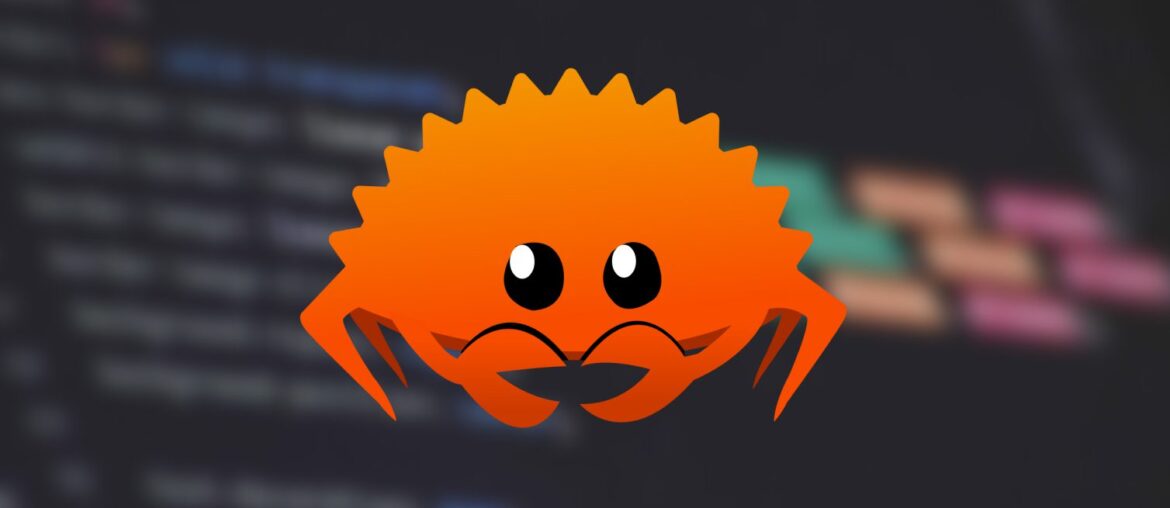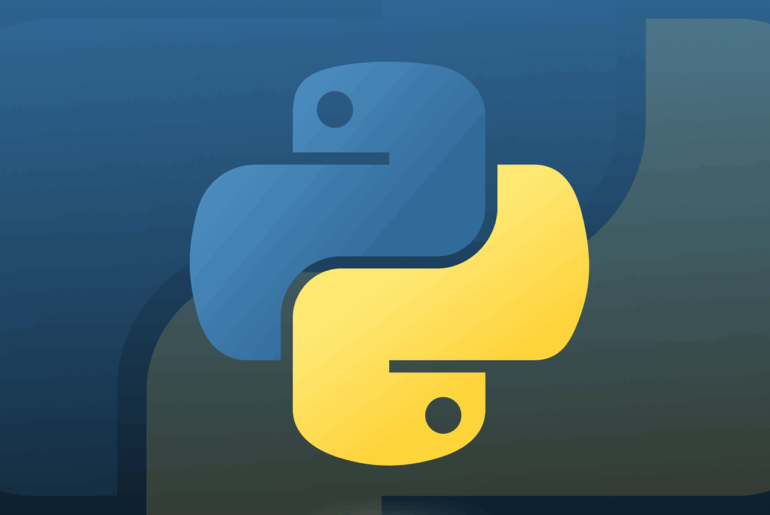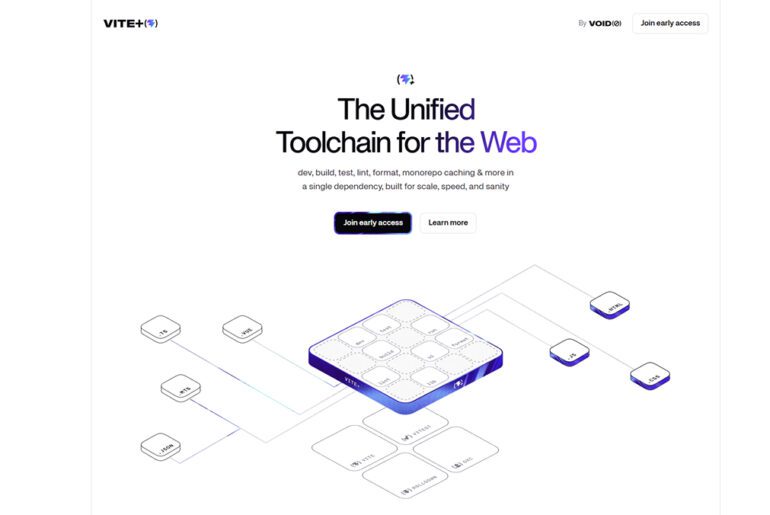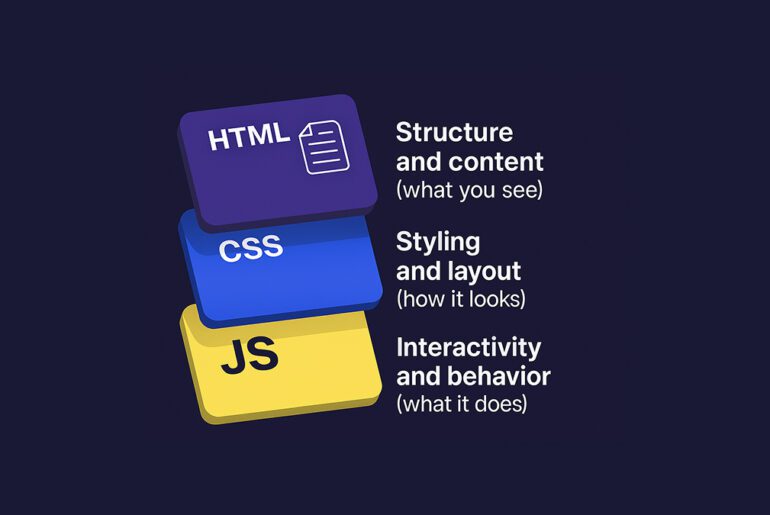Rust’s rise from systems and tooling into web development is gradual but steady. In the early 2020s, frameworks were experimental, and many projects stuck with micro-crates or ad hoc HTTP stacks. Over time, as async/await stabilized and Rust’s ecosystem matured, several frameworks began to solidify and attract usage.
By 2024 and into 2025, usage signals (GitHub stars, downloads, community chatter) and ecosystem momentum have made a few frameworks emerge as “go to” options. Some are full-featured, others minimalistic; some favor performance above all, others favor ergonomics. In this guide I’ll walk you through what’s popular now, what trade-offs people consider, and how you might choose one for your own work.
You (the reader) are part of that story — you get to ride the wave rather than catch up later.
When I say “popular”, I mean a combination of:
- active maintenance and recent releases (2024–2025),
- community usage (stars, downloads, real-world projects),
- ecosystem integration (middleware, database crates, extensions),
- developer sentiment.
I also include frameworks that are rising now (even if not yet dominant) because they might matter soon.
Here are some of the most referenced and used Rust frameworks as of 2025, with pros, cons, and sample code.
Actix Web
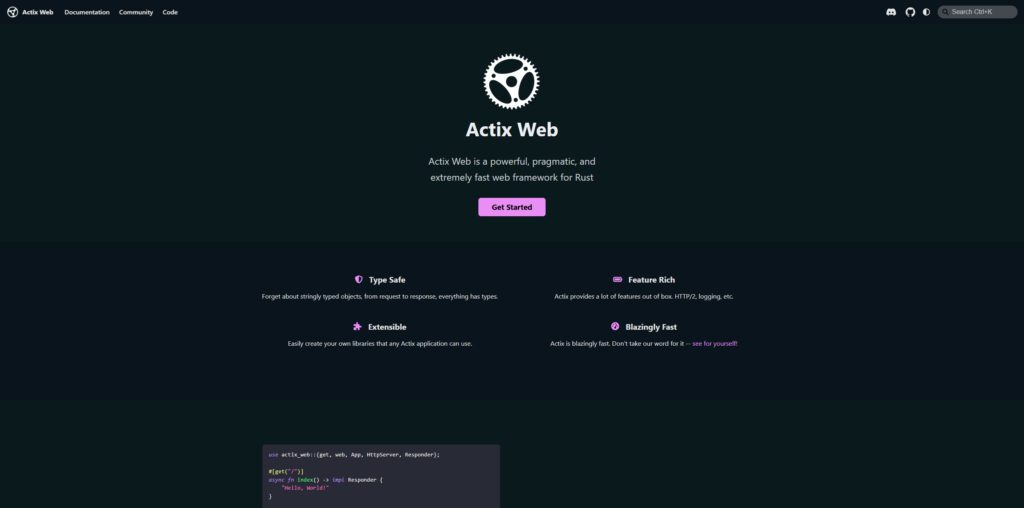
Actix Web continues to be a benchmark favorite. It is mature, performant, and feature-rich.
Pros
- Very high performance on HTTP workloads.
- Rich middleware ecosystem, support for WebSockets, compression, etc.
- Proven in production systems.
Cons
- Steeper learning curve. It sometimes requires deeper understanding to use advanced features.
- Some parts historically used
unsafe, though the maintainers have reduced that over time.
Sample “hello world” in Actix Web
use actix_web::{get, App, HttpResponse, HttpServer, Responder};
#[get("/")]
async fn hello() -> impl Responder {
HttpResponse::Ok().body("Hello, world!")
}
#[actix_web::main]
async fn main() -> std::io::Result<()> {
HttpServer::new(|| App::new().service(hello))
.bind(("127.0.0.1", 8080))?
.run()
.await
}Axum
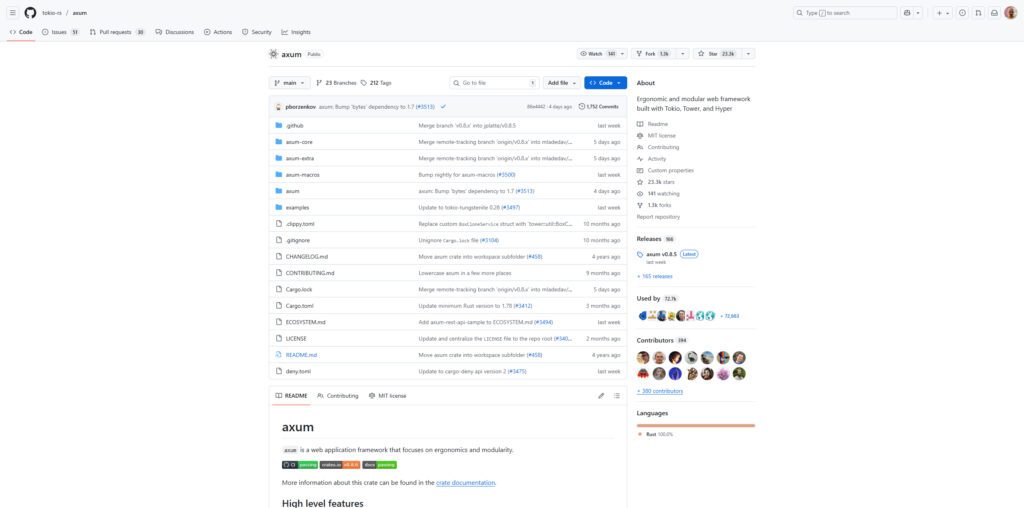
Axum has gained a lot of popularity and mindshare as a nice balance between ergonomics and performance.
It is part of the Tokio ecosystem (co-designed in some sense), which gives it excellent async integration.
Strengths
- Clean, modular API with routing, extractors, and middleware design that feels composed.
- Good for building APIs, services, and microservices.
- Easy to get started and understand.
Trade-offs
- Performance is slightly behind Actix in benchmarks (on raw HTTP throughput) in many cases.
- Some features (higher level abstractions or batteries included) might require pulling in more crates.
While I won’t show full code here because it’s similar in style to Actix, routing in Axum often uses combinators or tower middleware, which gives you flexibility.
Rocket
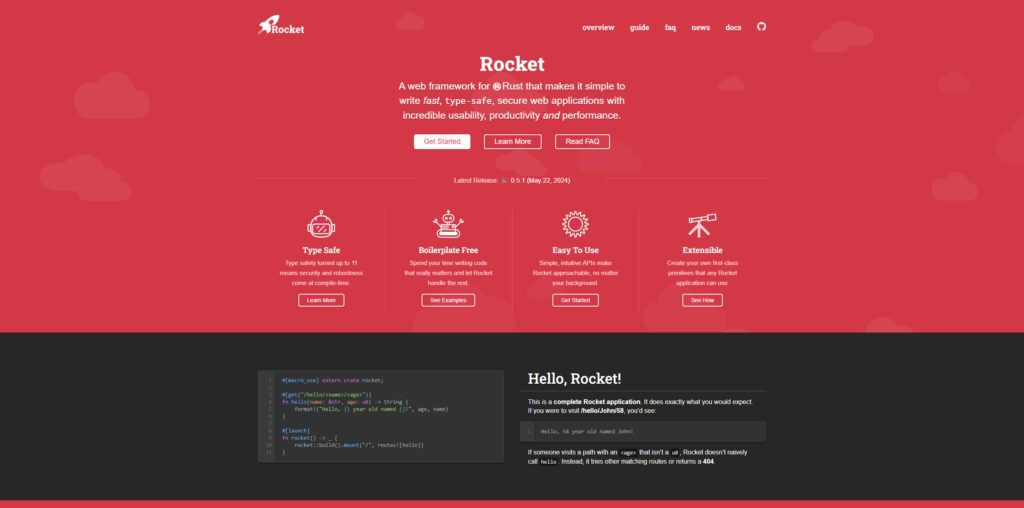
Rocket is one of the more “high level” frameworks. It emphasizes developer experience (DX) and ease of writing common web tasks.
Rocket historically required nightly Rust, but recent versions work on stable Rust.
Why pick Rocket
- It gives a lot of built-in convenience: request parsing, validation, templating, route macros.
- Good for smaller services or APIs where you prefer less boilerplate.
Caveats
- In extremely performance-critical services, it might lag behind more low-level frameworks.
- As it abstracts many details, debugging some internals can get more opaque.
Here is a small Rocket example:
#[macro_use]
extern crate rocket;
#[get("/hello/<name>/<age>")]
fn hello(name: &str, age: u8) -> String {
format!("Hello, {} year old named {}!", age, name)
}
#[launch]
fn rocket() -> _ {
rocket::build().mount("/", routes![hello])
}Warp
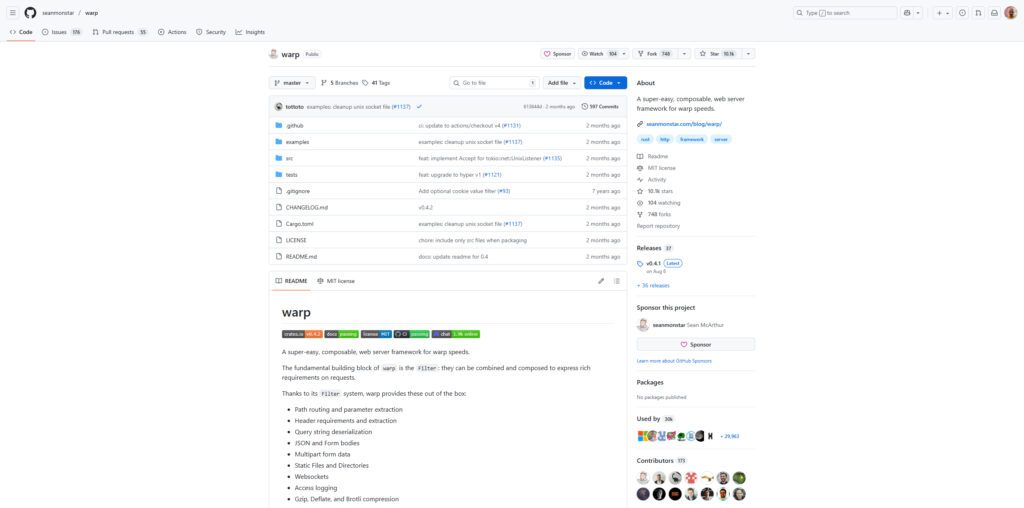
Warp is another popular choice, especially favored for expressiveness and the “filter” style of routing.
Strengths
- Very composable – you build routes by chaining filters.
- Strong at building APIs, streaming endpoints, etc.
Considerations
- The filter model is elegant but somewhat different from traditional routing, so there is a learning curve.
- For some common tasks, you might still pull in helper crates.
Warp is often mentioned in comparisons of Rust frameworks.
Emerging and niche frameworks to watch
Because ecosystems evolve, a few newer frameworks are gaining attention in 2025.
- Cot: A newer framework gaining mention in recent surveys.
- Loco: Less mainstream but interesting in particular niches.
- Dropshot: More minimal, focused on REST APIs rather than full web frameworks.
These may not be dominant yet, but as the community explores more patterns, some of these could grow faster.
How to choose among them
The “best” framework depends on your priorities. Here are some guiding dimensions:
- Performance vs Ease: If raw throughput is your target, Actix is often at the top. If you want developer happiness, Rocket or Axum might be better.
- Async Ecosystem: If you use Tokio, integration is smoother with Axum and related crates.
- Feature Needs: Do you need WebSockets, streaming, multipart, etc.? Check the ecosystem support.
- Learning Curve / Community: A framework with better docs, examples, and community support will likely save you time.
- Project Size / Longevity: For a long lived large service, picking a framework with a robust ecosystem is safer.
You might even prototype a small endpoint in 2 or 3 frameworks to see which feels better in practice. That is, ease, performance, and ecosystem all feed into your maintainability and suitability for a given service.
Summary
In 2025, the Rust web framework landscape is no longer experimental — several well-matured options allow you to pick what matches your style:
- Actix Web: for highest performance and feature richness.
- Axum: a strong all-around choice with clean API.
- Rocket: for developer happiness and convenience.
- Warp: for composable, expressive routing.
- Emerging ones: Cot, Loco, Dropshot — keep them on your radar.
If you’re starting a new Rust backend project today, I’d suggest beginning with Axum unless your domain demands extreme performance, in which case drop into Actix Web. Then layer on ecosystem crates (ORMs, migrations, etc.).


